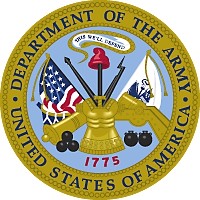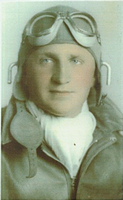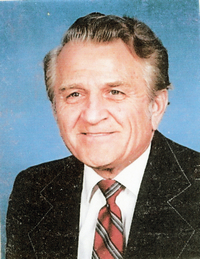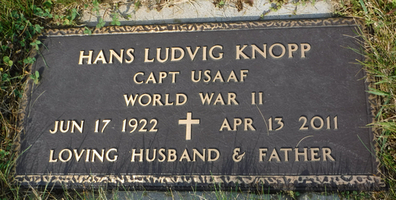Skip to content
Hans Ludvig Knopp
Lilah Crowe2020-08-29T13:05:55-05:00
- Name: Hans Ludvig Knopp
- Location of Birth: Germany
- Date of Birth: June 17, 1922
- Date of Death: April 13, 2011 (88 years old)
- Parents: John and Hedvig May Knopp
- High School and Class: 1940 - Greenway High School, Coleraine, Minnesota
- College:
- Highest Rank: CAPT (Captain)
- Branch: Army
- Other Branch: United States Army Air Force
- Date Sworn In:
- Place Sworn In:
- Date of Discharge:
- Place of Discharge:
-
- Military Awards:
Distinctive Flying Cross
- Military Highlights:
During World War II, Hans joined the Army Air Force attaining the rank of Captain. He flew transport planes from India to China over the Himalayan Mountains, also known as the Burma Hump. Over 600 planes and 1300 men were lost as they flew their unpressurized aircraft at 15,000 feet through blinding fog, violent thunder storms and hurricane force winds.
Hans flew 168 missions, 20 of which were to evacuate troops from the Battle of Imphal in India. He was awarded the prestigious Distinctive Flying Cross for his service. Hans later served as a flying instructor in Reno, Nevada.
News article written by Britta Arendt for the Grand Rapids Herald Review, dated May 19, 2004
"World War II hero - Flying Over the Hump - He never bailed out
Editor's note: this story is the second in a four-part series by the Herald-Review to honor a few of our local WWII heroes. This series takes place in conjunction with a local program to honor WWII veterans which will be conducted over Memorial Day weekend at the IRA Civic Center. The dedication of a national memorial honoring WWII veterans will take place May 29 in Washington, D.C.
Hans Knopp braved the toughest flying of World War II--168 times--over the infamous and horrendous Hump of the Himalayan Mountains, from Burma to China.
Now a resident of Grand Rapids, Hans was born in Germany but moved to the United States at age 5. After enlisting in the Army, he says he was often followed by the FBI who checked his background extensively, annoying his mother and scaring his fellow recruits.
"People don't realize the Gestapo we have here," chuckled Hans. "They made sure I had a clean slate."
And a clean slate is exactly what Hans has had all his life. He is one of few to make it over the Hump alive even once, none-the-less 168 times in the 14 months he was stationed with the U.S. Army Air Transport Command in Burma from 1943 to 1944. He simply refused to bail out--despite very unfavorable conditions.
There were three main elements that Knopp said the C-46 transport pilots, like himself, had to contend with in the CBI (China, Burma, India) Theater. Those elements were the Himalayan Mountains and the weather they produced, the Japanese planes and the equipment.
Moving gallons upon gallons of gas aside hundred of pounds of explosives, Hans and his crew of four on the C-46 (dubbed the flying coffin because of its multiple mishaps) would leave one of a few air fields in Burma, touch down in India and finally reach China. When the U.S. Army's C-47 plane was thought to not have enough cargo space, the C-46 became the largest twin engine plane in the Army.
But, Hans says, "It was plagued with bugs."
Besides the carburetor icing, the gas lines in the C-46 would often freeze. The large cargo planes were so big and so slow, that they were prone to engine failure which Hans thinks is one of the main reasons 600 planes and 1,000 airmen went down in the Air Transport operation over the Hump.
"The reason we flew the Hump was because the Japs cut off the Burma Road," said Hans as he explained that, after the Burma Road was closed, the Hump was the main access for flying supplies to China.
Wild, uncharted country, the Himalayas were at the heart of the Hump. From 16,000 to 18,000 feet high, the Himalayan Mountains stirred up nasty weather for Hans and the other transport pilots. One of the most dangerous factors was the tremendous up sweep. Hans said the planes would often be swept up to altitudes as high as 27,000 feet then, just a moment later, drop back down at 3,000 feet a minute--all in "the soup" or very poor visibility. Hans said sometimes all he could do was close his eyes and hope that they didn't crash into a mountain.
"A prop plane is not like a jet engine--the higher you go in a prop plane, the slower you go, explained Hans. "A lot of planes didn't make it."
Hans said they called the area, under the worst part of the Hump, Aluminum Row because of the hundreds of planes that had crashed, killing several of his friends. And as the number of pilots dramatically reduced, Hans was called to take more trips over the Hump. Hans remembers there was one week when four C-46 planes crashed at the end of the same runway, blasting into flames from the overload of explosions on board.
"We had everything going for us," joked Hans, adding that there was no air traffic control at that time so the planes were often left stacked in the fog, suspended three or four on top of each other as they waited to land.
In fact, Hans said he saw several pilots bail out after blindly dangling in the fog with no clue as to why they couldn't land. They would even go so far as to yell 'Mayday,' over their radios because they couldn't get in and they were running out of fuel.
No matter how tough the missions nor how painful the conditions, Hans said it was his "job".
But he believes, "In war, you're expendable. They just wanted to get the cargo to China."
Hans believes God must have been with him during every one of his trips over the Hump because he always returned back to their base camp without so much as a scratch. He told of several close calls when the carburetor in his plane would ice up or the plane would lose an engine. There were several times when the radio operator and flight engineer in Hans' plane would toss out barrels of gasoline to lighten the load so they could survive the treacherous weather conditions--only to arrive at their destination with no cargo.
As to why he never bailed out, Hans said the chances of walking out of the Himalayas alive was not good. Besides, the C-46 crews were only armed with .45 magnum pistols. And Hans said many of the guys in his unit didn't know how to shoot.
"We really did kiss the ground every time we got back from a bad situation," remembered Hans.
Some of Hans' fellow pilots in the Air Transport Command became "Hump happy" which meant that the stress of flying over the Hump left them so crazy that they didn't care anymore. The Army's cure for those who were "Hump Happy" was alcohol, sometimes keeping them drunk for weeks. In fact, Hans said every time any of the pilots would return safely from a trip across the Hump, they would be given a shot of vodka or whiskey on an empty stomach.
"It was our mission vicar," said Hans.
At base camp, there were no amenities. Hans said they stayed in little straw huts called bashas where rats, snakes and bugs ran rampant. With no refrigeration, he remembers the food was terrible. So most of the time they ate water buffalo with rice bread that was full of worms and bugs and kneaded under the armpits of the Indian people.
For many reasons, the cargo pilots were said to have lived like dogs and flied like fiends. Hans said three men died for every 1,000 pounds of cargo that made it to China. But, like himself, Hans believes the ATC pilots had a "cocky sense of humor." They knew they were involved in the toughest, most dangerous flying of the war, yet they did their best with the odds against them.
"What's the toughest on a human being, sweating out every moment thinking we might crash or being in a P-38 with a bunch of guns and shooting at an enemy that I can see?" asked Hans who believes today's soldiers have things much better.
In 1944, Hans returned to the U.S. where he became a flight instructor for other transport pilots. After one of his buddies crashed into a mountain, he decided to give up flying.
In 1947, he was diagnosed with lung cancer and given three months to live. Taking some unconventional advice, Hans fasted for 21 days and the cancer disappeared. He then obtained his doctorate in chiropractory but worked in management for several large companies like Litton Industries and Xerox and retired in 1980. He lives with his second wife, Arlene, enjoys playing the saxophone and stays healthy at age 82. He has even published a book entitled "Why get old?" which reveals his secrets for obtaining youth, vitality and health.
"He's my hero," smiled Arlene."
- Wars Involved:
World War II
- MIA / POW:
- Civilian Life:
As a toddler, his family immigrated to Pengilly, Minnesota. During is high school years, Hans played the trumpet and saxophone in a dance band. He was an accomplished musician and dancer.
After the war, Hans married Diane Arden Roxby (deceased) with whom he had three children.
Hans became a Doctor of Chiropractic medicine, but spent most of his career in Senior Management at Litton Industries and Xerox Corporation at various locations around the country.
After retiring, Hans moved back to Minnesota, only to start another career as Community Education Director for Hill City, Minnesota.
Hans is survived by his wife of 24 years, Arlene; sons, Christopher (Mary) and Kevin; daughter, Kimberly Mandley (Rich); and a sister, Ilse Diers. His surviving stepchildren are Michelle Morris, Vickie Herman (Mark), John Bjorkquist (Meredith), Shari Rich (Chip), and Gayla Bone (Jonathan). He is also survived by numerous grandchildren and great-grandchildren.
Hans passed away at St. Mary's Hospital in Duluth, Minnesota. and is buried in Harris Cemetery at Grand Rapids, Minnesota. (Plot 3)
- Tribal Affiliation(s):
Page load link





